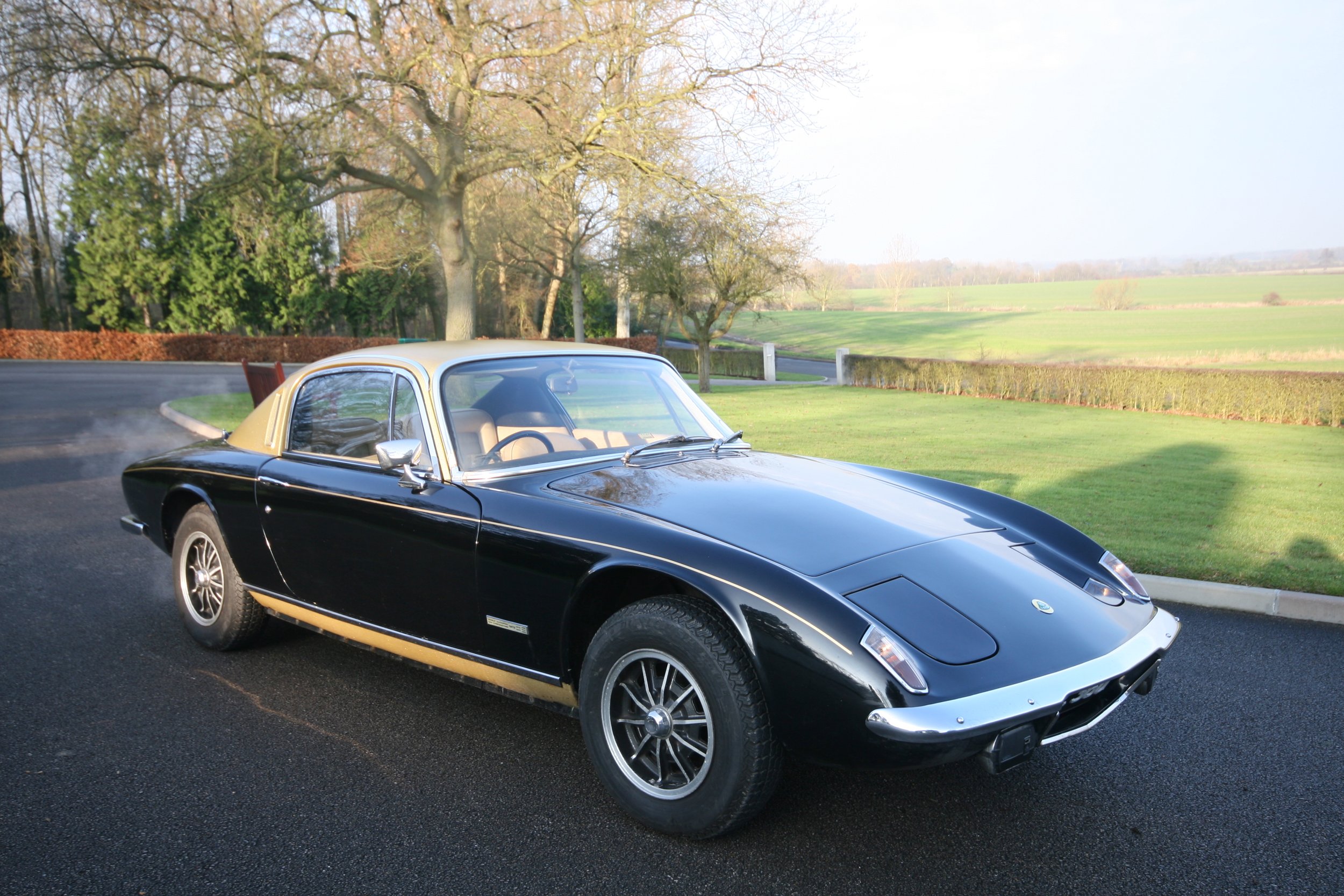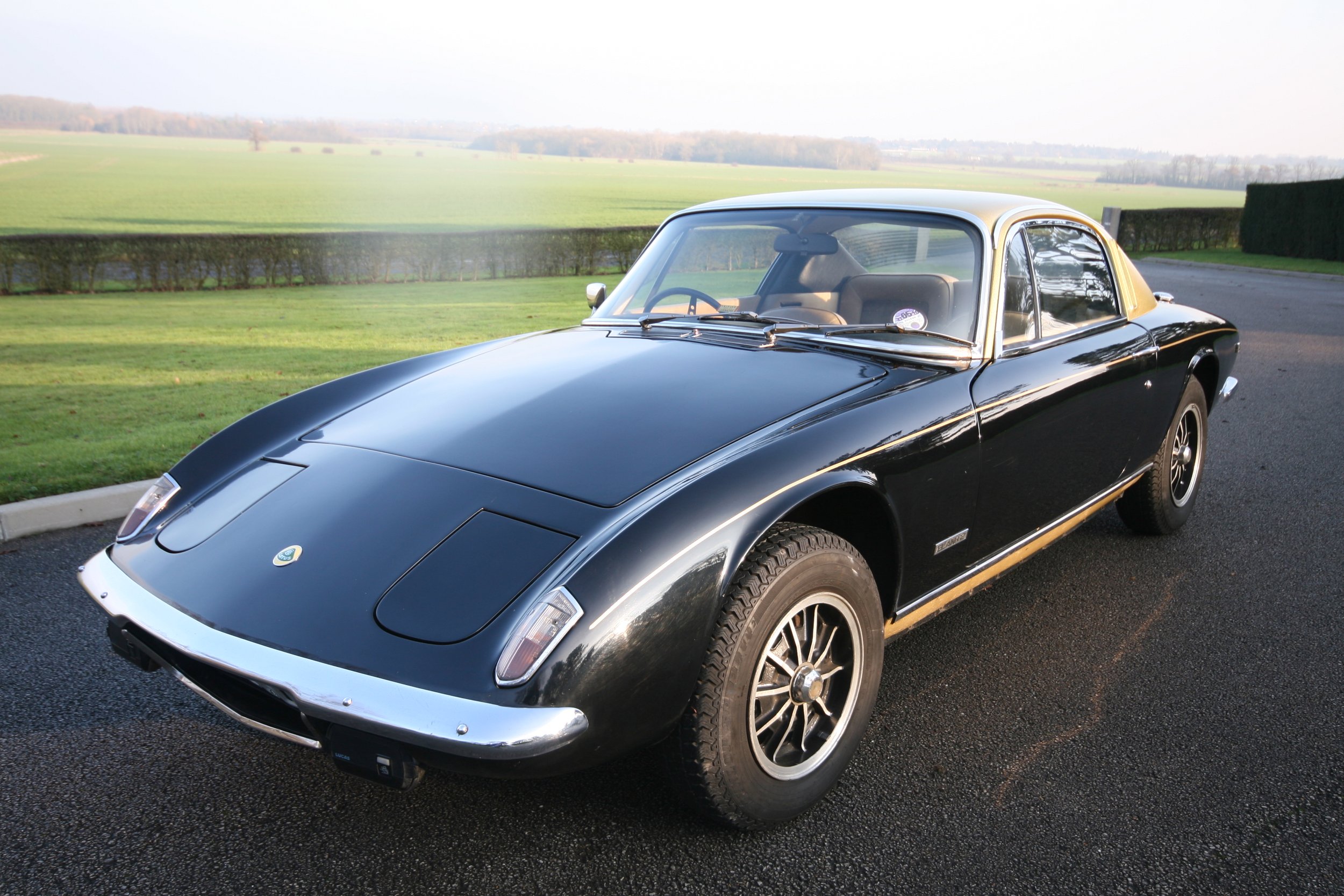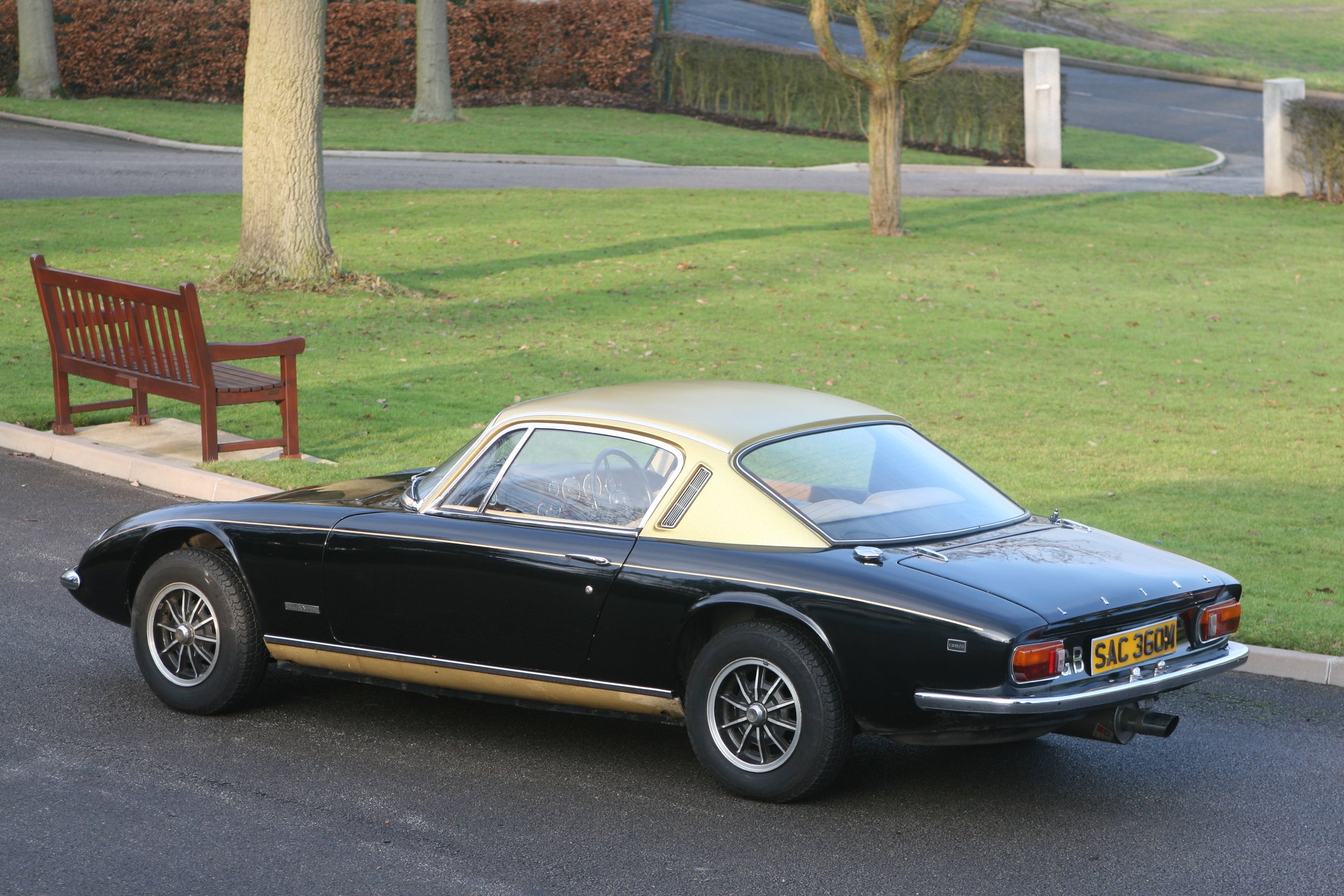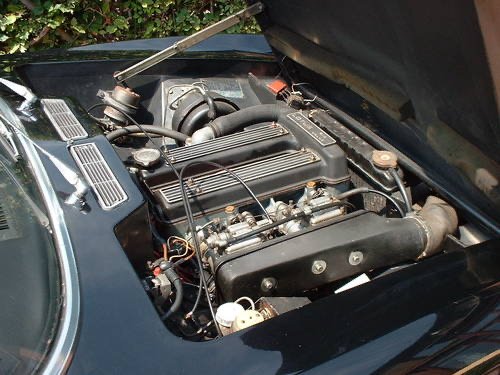
Lotus Elan +2S 130/5 JPS
Details
The original Elan was introduced in 1962 as a roadster, although an optional hardtop was offered in 1963 and a coupe version in 1965. The two seat Lotus Elan replaced the elegant, but unreliable and expensive to produce Lotus Elite. It was the first Lotus road car to use the now famous steel backbone chassis with a fibreglass body. At 1,500 lb (680 kg), the Elan embodied the Colin Chapman minimum weight design philosophy. Initial versions of the Elan were also available as a kit to be assembled by the customer. The Elan was technologically advanced with a twin-cam 1558 cc engine, 4-wheel disc brakes, and 4-wheel independent suspension. The Lotus-Ford Twin Cam engine was based on Ford’s Kent, with a Lotus-inspired Cosworth alloy twin-cam head. This Lotus-Ford 4-cylinder engine would go on to be used in a number of Lotus production and racing models.
An Elan +2 was introduced in 1967 with a longer wheelbase and two more rear seats. The Elan + 2 embodied the Lotus spirit: It was a fast and agile sport coupe, with very elegant lines. It combined the performance and reliability of the Elan "Coupe" with genuine 2+2 passenger comfort. Tested maximum power: 108-126 bhp(net)depending on the model); top speed: 120 mph (190 km/h), 0-60 mph in 7.9 seconds, 0-100 mph 21.8 seconds. 5,200 Elans + 2 were made: less than 1,200 of these cars remain in the roads today. Their relative rarity, beautiful lines, impressive performance and practicality are the main factors for the rising interest on these cars among collectors.
The Elan ceased production in 1973 and the Elan +2 in 1975. An estimated total of 17,000 original Elans and Elan +2's were built. Because of its successful design and technological sophistication, the Elan went on to become Lotus' first commercial success, reviving a company stretched thin by the more exotic and less commercially successful Elite, and enabling funding of the Lotus success in racing over the next ten years.
The Lotus-Ford Twin Cam is a 1558 cc engine developed for the 1962 Lotus Elan and also used in a variety of other vehicles up until mid 1970's.
required a low cost, compact, yet powerful engine for the 1962 Lotus Elan. Colin Chapman chose to use the 116E thin wall cast iron block first used by Ford in the Consul Classic, the Capri and later to be used in the Cortina. While the basic engine design was relatively sound, being of 5 main bearing construction, it was by no means a performance engine. To achieve the power required, Chapman commissioned Harry Mundy, then technical editor for Auto Car magazine, to design a double overhead camshaft conversion. This comprised an aluminium cylinder head and an aluminium front cover assembly containing the water pump and the chain driven camshaft drive.
In its initial evolution the engine had a cubic capacity of 1498 cc and produced approximately 100 bhp (75 kW). After approximately 50 engines had been produced (only 22 engines of this initial specification made their way into roadgoing Elans, the rest being used in the Lotus 23) the specification was changed so the engine had a 0.060" larger bore dimension as standard thereby increasing the cubic capacity to 1558 cc. This enabled an overbore of 0.040" permitted by the FIA regulations would still mean a cubic capacity below the new 1600 cc FIA class limit.
The cylinder head has hemispherical combustion chambers similar to that first used by Peugeot on their 1912 Grand Prix car and subsequently refined by Jaguar in their XK engine of the 1950s
Valve sizes used are 1.530" diameter inlet and 1.325" diameter exhaust on all engines except the "big valve" Elan Sprint and Lotus Europa models which have an inlet valve measuring 1.565" diameter.
Applications
■1962-1974 Lotus Elan
■1963-1970 Lotus Cortina
■1968-1970 Ford Escort Twin Cam
■1971-1975 Lotus Europa
■1973-1974 Lotus Seven
■
Motorsport
The Lotus Twin Cam is an enduring engine and even to this day is still used in rallying, hillclimbing, autocross and of course, historic motorsport events. In fact, some may argue that the "twink" is more popular in motorsport now than it was during it's production. This, in no small part, is due to the likes of companies such as QED Motorsport who strive to keep the engine in service with hard or impossible to find engine components. QED even bought the license to officially re-produce the Twin Cam’s Cylinder Head !
Car History
Date Registered December 1973
Registration SAC 360M
Chassis 94 of 120
Engine Lotus-Ford Twin Cam Engine Output 126 b.h.p.
Mileage 69,900
Exterior Colour Black & Gold fleck
Interior Colour Oatmeal
5 Speed Manual
Stainless steel manifold & exhaust
Electric windows
Battery condition indicator
Map lamp
Clock
Outside temperature gauge
Auxiliary lamps
Steering column safety (telescope on impact)
Brake fail warning lamp
For Sale - SOLD













